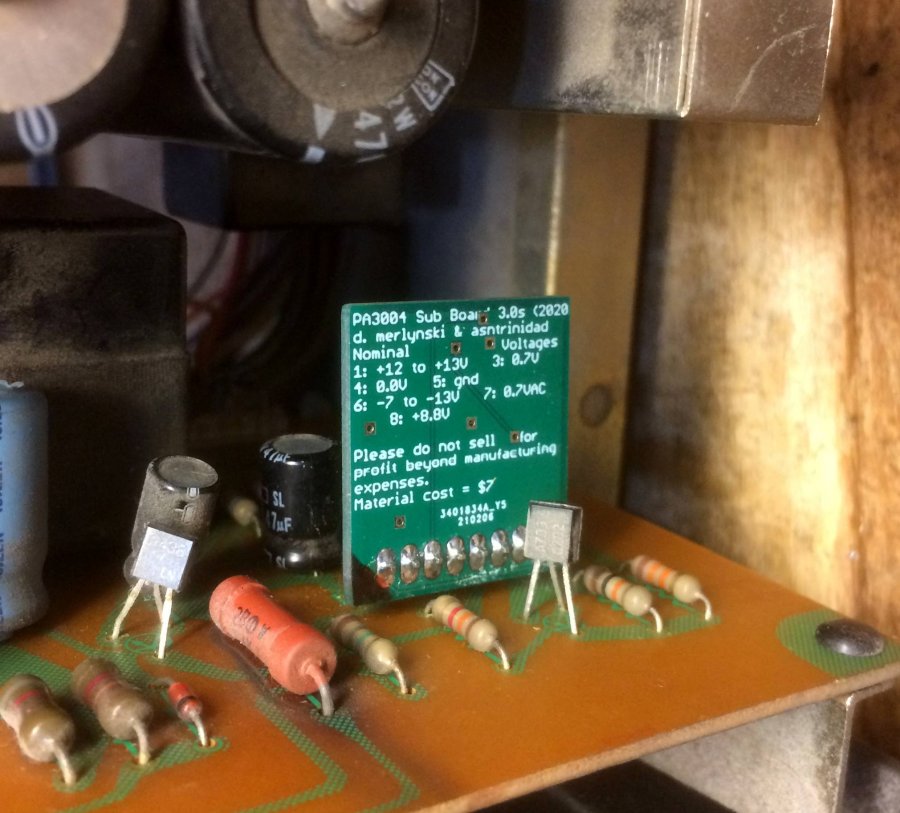
Testing done by johnhoef on June 6, 2021

"I installed your PA3004 clone in the SX1280 today. First issue was the holes in the PC board were too small, so I had to drill them out. The pins on the original chip are quite small. But, small price to pay to have a working protection chip. I drilled them out ever so slightly larger. Physically, your board fit fine with plenty of clearance all around. I did not push the pins all the way down, as I wanted some clearance between your board, and a resistor underneath. I then slowly brought up the variac while monitoring voltages, particularly the 13 volts that supply the PA3004. The relay pulled in at 11.7 volts, and stayed energized all the way to full voltage of around 13.9v. I'll have to investigate that voltage. It really shouldn't go very far past 13. I suspect the zener D13 in the power supply may be the culprit. With the old PA3004, as I turn up the variac and that 13v supply approaches around 12 volts, the relay energizes. Then as I continue turning up the variac, the relay drops out again. This does not happen with your clone. I suspect my PA3004 is defective after all! That's as far as I got today. I'll run some more tests later on, but so far, your clone is looking good!"
"I just completed another test. I disconnected the four wires connected to pins 13 through 16 on the protection board. This disconnects the speaker outputs from the power amps, and the speakers themselves. I then rigged a pot with my 12v bench power supply so I can apply a varying voltage to pins 14 and 16 of the protection board. This will test the protection circuits ability to drop the relay upon sensing a DC voltage on the power amp outputs. Fist I applied a positive voltage, slowly ramping up. The relay dropped at exactly 4vdc. I then did the same test with a negative voltage. The relay dropped a -4.75vdc. This could well be in spec for the protection circuit, but in my opinion, it seems a bit high. I'm not sure what the actual PA3004 is specd at. Perhaps you know? Yes, removing the variac, and plugging the SX1280 directly into a wall socket, it powers up, and after a delay, the relay engages."